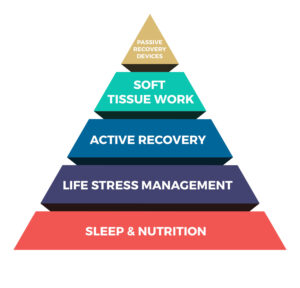I have established in a previous post that if you are an athlete and are training, recovery is as important as your training.
So the next logical question is: if recovery is that important, what should I do to prioritize my recovery?

After a deep dive into the scientific literature, I have created ASR’s Hierarchy of Recovery for the Athlete. Below is a breakdown of each area and some recommendations on how to prioritize your recovery.
Sleep & Nutrition
The foundation of all recovery is sleep and nutrition. Look at all the studies done on recovery from training and competition. You will find out there are two things that all of the nerds agree on: to recover, you must have a good diet composed of clean foods (Bonci et al.), and you must sleep 7-8 hours per night (Clark, Michael, and Hatton, Paul & NIH recommendations).
Life Stress Management
Full recovery from training ends with a psychophysical state of restored efficacy and homeostatic balance. An often but impactful overlooked piece of the recovery process is life stress management. Emotional, behavioral, and social stressors tax our brain the same way as training (reference). A lack of stress management can lead to overtraining and staleness, even if your training and all other areas of your recovery are perfect. Studies in the Journal of Pharmacology have shown that “acute and chronic stress cause changes in morphology and chemistry that are largely reversible if the chronic stress lasts for weeks.” Meaning that if you are stressed at work, home, and in training and are not recovering, you can cause irreversible damage to your brain & body chemistry that will make it impossible to return to a state of homeostatic balance.
The action item here is that you need to have some tools to buffer stress in your life and it can’t be training (adding more stress). Breathing techniques, meditation, hobbies, etc will all allow your brain to recover from the stress inputs. Find an outlet and get unplugged!!!
Active Recovery
High-intensity exercise training contributes to the production and accumulation of blood lactate, hydrogen, and other things that cause muscle soreness. It has been well documented that active recovery is the best way to clear these metabolic waste products. According to a study by the Journal of Sports Sciences, maximum blood lactate clearance happens at 90% of your lactate threshold.
Now all you CrossFitters out there, don’t go crazy; this is not an excuse to do rowing intervals on your day off. Find something that doesn’t add a ton of load to your tissues (i.e., swimming or biking), do that for 20 minutes, work up to 90% of your lactate threshold, and then stop.
Soft Tissue Work (Foam Rolling)
Randomized clinical trials by the Clinical Journal of Sports medicine have shown that manual therapy (ART, etc.) and self-care release work facilitate recovery from repetitive muscular contractions (Thomas et al.). If you train, you need to have a habit of spending at least 5 minutes/day rolling & stretching (the ASR daily Recovery WOD is an easy way to do this), you need to get monthly soft tissue work done (aka a tune-up for your body).
Passive Recovery & Gimmicks
Studies suggest that passive recovery following intense exercise results in a more significant muscle glycogen resynthesis than active recovery over the same duration. Such tools like the Normatec, Hypervolt, or Sauna will help your muscles build back up the energy stores for your next training session. These tools do not replace soft tissue work. They are something you should use once or twice a week for 20 minutes. They will be accommodating the night before a big competition or training session.



